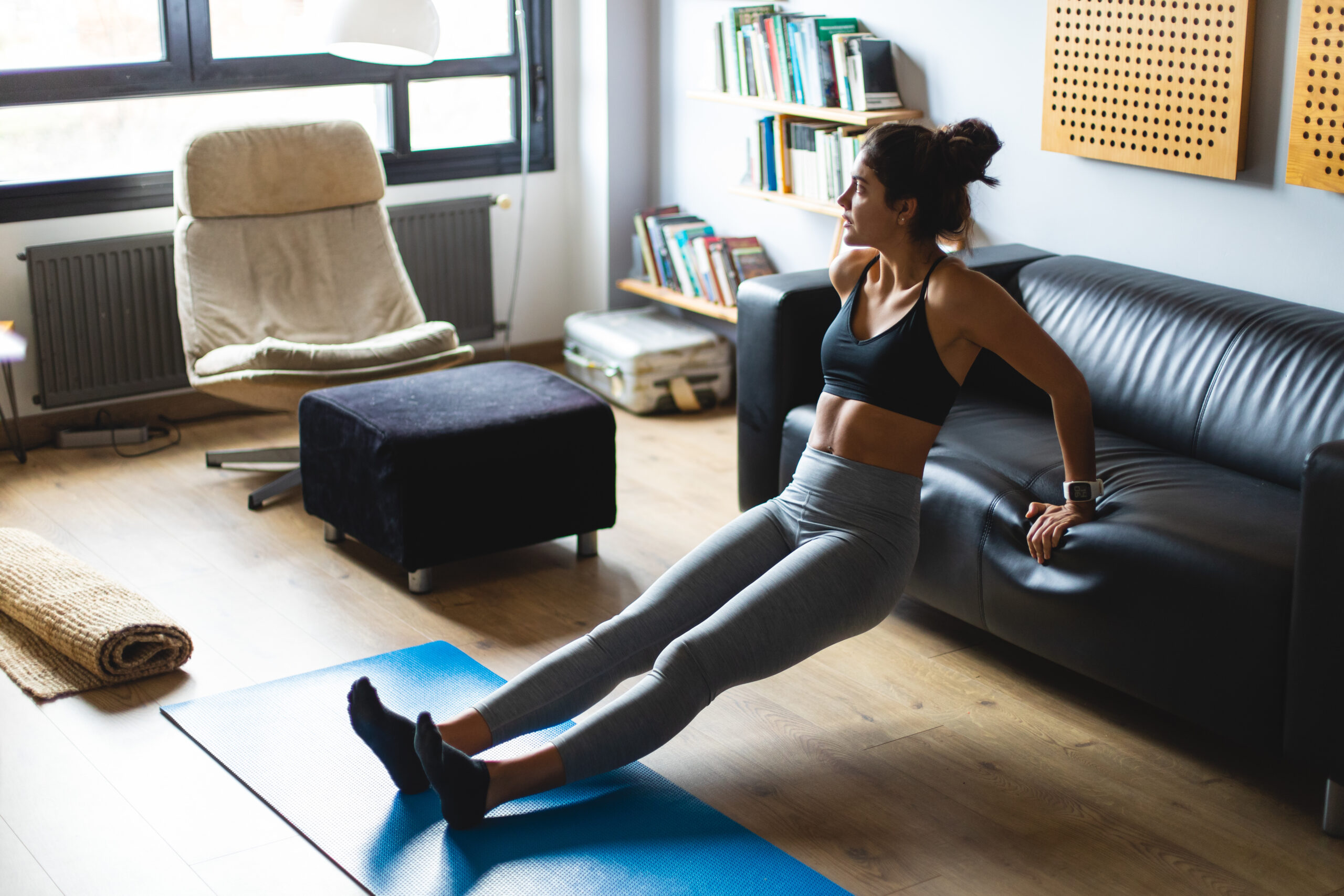Fitness Education: Transform your Furniture into Gym Equipment

 About the Author: Marlene DaCosta, MA, ACSM-CEP, CSCS, CHWC is an Exercise Physiologist and Certified Strength and Conditioning Specialist with Home Base’s Intensive Clinical Program and Warrior Health and Fitness Program. She is also the owner and founder of Serape Fitness and Wellness, a business that provides in-home personal training and health and wellness coaching services to private clients in the Greater Boston Area.
About the Author: Marlene DaCosta, MA, ACSM-CEP, CSCS, CHWC is an Exercise Physiologist and Certified Strength and Conditioning Specialist with Home Base’s Intensive Clinical Program and Warrior Health and Fitness Program. She is also the owner and founder of Serape Fitness and Wellness, a business that provides in-home personal training and health and wellness coaching services to private clients in the Greater Boston Area.
As we spend our days and evenings sheltering in place, the need for movement is more important than ever. Some of us are trying to keep up with an exercise routine to some degree while others just simply want to get started. Regardless of where you are, many of us often wonder, how am I going to exercise at home without any equipment? The most important thing to realize is that you always have a few options.
A chair (without wheels of course) can be used to perform a variety of exercises. Using a chair can also come in handy for other exercise modifications if you have difficulty standing for prolonged periods of time or getting down or up from the floor. What’s great about the chair is that many exercises can be modified for varying levels of physical ability.
These exercises include chair squats, also known as sit to stands, heel raises, modified bird dogs or dips to name a few. For example, depending on your level of fitness, a triceps dip exercise using the armrests is a good place to start before performing dips using the seat, which requires a bit more range of motion and strength.
Make use of your home’s floor space by moving that coffee table aside to make room for stretching or those core training exercises that you would like to keep up with. If space is a bit larger, you also have room to perform that exercise video you have been wanting to try through Operation Health@Home’s on-demand YouTube playlist, or a workout DVD that you have not viewed in a while.
There are also items that may be hidden in a closet or storage area of your home, such as weights or resistance bands. If that is not the case there are a few items that can be purchased online that are relatively inexpensive. In this post, we will focus primarily on resistance bands of which there are a few varieties.
Some resistance bands or tubing with handles come with door anchors where you can place the band through the loop of the anchor and position the anchor in the door jam. Shut the door and make sure that both the door and the anchor are secured in place prior to starting the exercise. Examples of exercises that can be performed with these are the chest press, rows, shoulder press, biceps curls, triceps extensions, squats, lateral raises, and core exercises.
Therabands are another type of resistance band. Often used in physical therapy, these bands are easy on the joints and a low-impact option.
Mini-bands: Mini bands are another great joint-friendly option. They can be used as a form of warming up before a strength training routine or to isolate and target smaller muscles that support the hip and shoulder musculature.
The nice thing about resistance bands is that they do not take up a lot of space. They store easily, are great to take on the road when you have to travel and some come with a set of instructions or a sheet of sample exercises. If you have a latex allergy, there are some brands that are latex-free.
Last but not least is having a good exercise mat. A quality yoga mat or padded exercise mat can be helpful if you have a hard floor and you wish to have a little bit of cushioning for your joints to perform stretches or core training exercises.
If you have questions about our fitness and wellness program at Home Base – please reach out to us – and don’t forget to follow Home Base Operation Health@Home for NEW content daily on mental health, mindfulness, nutrition, fitness education, and free online workout classes.


 Home Base
Home Base